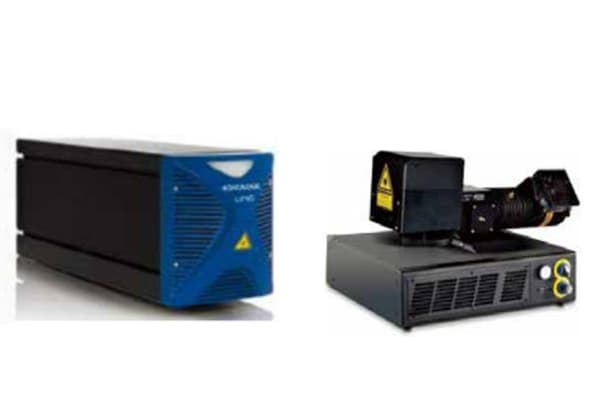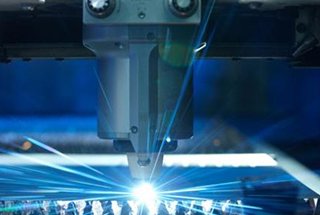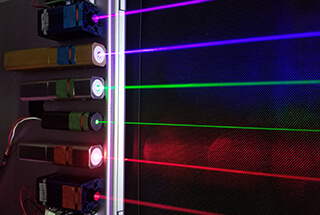The world’s first laser was developed by American scientist Professor Theodore Harold Maiman using ruby in 1960. Since then, lasers have been utilized in various fields, contributing to the rapid development of science and technology in medical treatment, equipment manufacturing, accurate measurement, and remanufacturing engineering. The promotion of laser technology has accelerated the pace of social progress and led to significant achievements in the field of cleaning applications.
Compared to traditional cleaning methods like mechanical friction, chemical corrosion, and high-frequency ultrasound, laser cleaning can achieve fully automatic operation with the advantages of high work efficiency, low cost, no pollution to the environment, no damage to the substrate, and a wide range of applicable materials. It fully conforms to the processing concept of green and environmental protection, making it the most reliable and effective cleaning method currently available.
Cleaning is a necessary prerequisite for detecting and processing waste machine parts. Using laser cleaning technology can effectively control the surface morphology and surface roughness of the substrate while improving the performance of the substrate after cleaning. It can also be applied to the manufacturing, surface treatment, or remanufacturing of large parts.
While laser cleaning has not entirely replaced traditional cleaning methods, the increasing national awareness of energy conservation and emission reduction in the manufacturing industry will lead to its gradual adoption due to its unique advantages. After 2020, when China’s environmental protection laws and regulations became stricter and people’s environmental and safety awareness increased, the types of chemicals that can be used in industrial production cleaning have decreased. Thus, finding a cleaner and non-destructive cleaning method has become a pressing issue.
Laser cleaning has the characteristics of no grinding, non-contact, no thermal effect, and suitability for all kinds of objects. It is regarded as the most reliable and effective solution to this problem. Additionally, laser cleaning can address issues that traditional cleaning methods cannot solve.
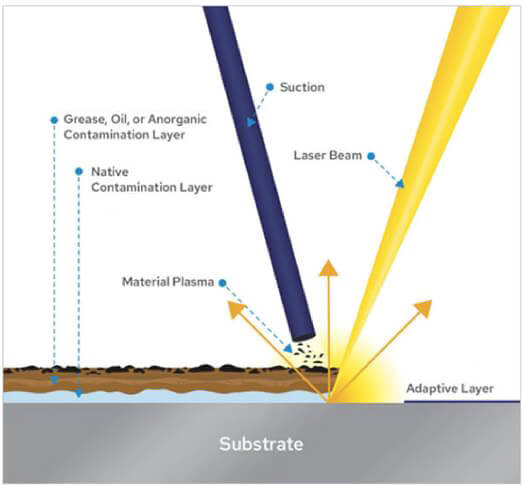
Principle of laser cleaning
Introduction
When submicron pollution particles adhere to a workpiece surface, they often stick very tightly, making it impossible to remove them with conventional cleaning methods. However, cleaning the workpiece surface with nano laser radiation is very effective.
Furthermore, laser cleaning is a non-contact method of cleaning, making it very safe to clean precision workpieces or their fine parts and ensure their accuracy.
Therefore, laser cleaning has unique advantages in the cleaning industry.
But why can lasers be used for cleaning, and why do they not damage the cleaned object? To answer these questions, we first need to understand the essence of lasers.
In short, lasers are no different from the accompanying light (visible light and invisible light) around us. However, the laser uses a resonator to concentrate the light in the same direction, making it more powerful and precise than simple wavelength and coordination.
Therefore, theoretically, all wavelengths of light can be used to form a laser. However, in practice, there are few media that can be excited, so the laser light source that can produce stable and suitable industrial production is quite limited.
Nd: YAG lasers, carbon dioxide lasers, and excimer lasers are widely used. Nd: YAG lasers, in particular, can be transmitted through optical fibers and are more suitable for industrial applications, making them widely used in laser cleaning.
Academically, laser ablation (scientific name of laser cleaning) or light ablation is a process of removing materials from solid (or sometimes liquid) surfaces by irradiating them with a laser beam.
At low laser flux, the material is heated and evaporated or sublimated by the absorbed laser energy. At high laser flux, materials are usually converted to plasma. Generally, laser ablation refers to the removal of materials with pulsed laser, but if the laser intensity is high enough, the materials can be ablated with continuous wave laser beam.
Deep ultraviolet excimer lasers are mainly used for optical ablation. The laser wavelength for optical ablation is about 200 nm.
The depth of absorbing laser energy and the amount of material removed by a single laser pulse depend on the optical properties of the material, the laser wavelength, and pulse length.
The total mass of each laser pulse ablated from the target is usually referred to as the ablation rate. Laser radiation characteristics, such as laser beam scanning speed and scanning line coverage, will significantly affect the ablation process.

Effect of laser cleaning tire mould
Principle of laser cleaning
In the mid-1980s, scientists such as Beklemyshev and Alrn conducted research on laser cleaning by combining laser technology with cleaning technology, in response to actual work needs. This led to the development of the technical concept of laser cleaning.
As we know, the binding force between pollutants and the matrix can be categorized into covalent bonds, double dipoles, capillary action, and van der Waals force. If this force can be overcome or destroyed, the decontamination effect can be achieved.
Laser cleaning utilizes the characteristics of a laser beam, such as its large energy density, controllable direction, and strong convergence ability, to destroy the bonding force between pollutants and the matrix, or directly vaporize pollutants. This reduces the bonding strength between pollutants and the matrix, thereby cleaning the workpiece surface.
The schematic diagram of laser cleaning is shown in Fig. 1.
When the pollutant on the workpiece surface absorbs the energy of the laser, it overcomes the force between the pollutant and the substrate surface through rapid gasification or instantaneous thermal expansion. As a result of the increase in heating energy, the pollutant particles vibrate and fall off from the substrate surface.
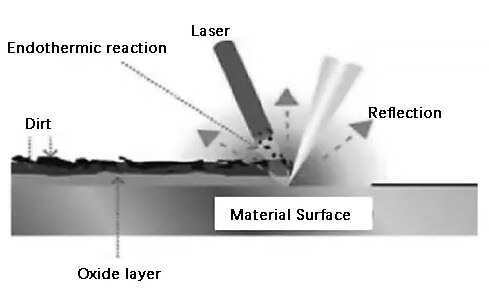
Fig. 1 Schematic diagram of laser cleaning
The whole laser cleaning process is roughly divided into four stages:
- Laser gasification and decomposition
- laser stripping
- Thermal expansion of pollutant particles
- Substrate surface vibration and pollutant separation
When applying laser cleaning technology, it is important to consider the laser cleaning threshold of the object being cleaned and select the appropriate laser wavelength to achieve the best cleaning effect.
Laser cleaning not only allows for changes in the grain structure and orientation of the substrate surface without damaging it, but also enables the control of substrate surface roughness, enhancing the overall properties of the surface.
The cleaning effect is primarily influenced by the characteristics of the laser beam, physical parameters of the substrate and dirt materials, and the absorption capacity of the dirt to beam energy.
Currently, laser cleaning technology includes dry laser cleaning technology, wet laser cleaning technology, and laser plasma shock wave technology.
Dry laser cleaning
Pulse laser cleaning is a process where a laser beam is directed at the workpiece, increasing the energy absorption temperature of the substrate or surface pollutants. This causes thermal expansion or substrate thermal vibration, which separates the pollutants.
There are two cases in which this method can be applied:
Firstly, when the surface pollutants absorb the laser and expand, they separate from the substrate.
Secondly, when the substrate absorbs the laser, it produces thermal vibration, leading to the separation of the pollutants from the substrate.
Wet laser cleaning
Wet laser cleaning involves applying a liquid film onto the surface before irradiating the workpiece with a pulse laser. The laser heats the liquid film, causing it to rapidly vaporize.
During vaporization, a shock wave is generated which dislodges the pollutant particles from the substrate.
This method is limited by the requirement that the matrix must not react with the liquid film, thus restricting the range of applicable materials.
Laser plasma shock wave
Laser plasma shock wave cleaning technology involves the production of a spherical plasma shock wave by breaking through the air medium during laser irradiation.
The shock wave acts on the surface of the substrate and releases energy to remove pollutants, without damaging the substrate as the laser does not directly impact it.
This technology can effectively clean particle pollutants as small as tens of nanometers, and is not limited by the laser wavelength.
In actual production, various test methods and related parameters should be selected based on specific needs to ensure high-quality cleaning of workpieces.
During the laser cleaning process, evaluating the surface cleaning efficiency and quality is crucial in determining the effectiveness of the technology.
Advantages
Compared to traditional cleaning methods such as mechanical friction cleaning, chemical corrosion cleaning, liquid-solid strong impact cleaning, and high-frequency ultrasonic cleaning, laser cleaning offers several advantages.
2.1 Laser cleaning is a “green” cleaning method that doesn’t require the use of any chemical agents or cleaning solutions. The waste produced during cleaning is primarily solid powder, small in volume, easy to store, and recyclable. This makes it possible to address the environmental pollution caused by chemical cleaning.
2.2 Traditional cleaning methods are often contact cleaning, which exerts mechanical force on the surface of the cleaned object, causing damage to the surface or the cleaning medium getting stuck to the surface, leading to secondary pollution. Laser cleaning, which is non-grinding and non-contact, can solve these problems.
2.3 Lasers can be transmitted through optical fiber and can work together with a manipulator and a robot for long-distance operation. They can clean parts that are difficult to reach by traditional methods, ensuring personnel safety in some dangerous places.
2.4 Laser cleaning can remove various types of pollutants on the surface of various materials and achieve a level of cleanliness that cannot be achieved by conventional cleaning methods. It can also selectively clean pollutants on the material surface without damaging it.
2.5 Laser cleaning is highly efficient and saves time.
2.6 Although the one-time investment in purchasing a laser cleaning system is high, the cleaning system can be used stably for a long time with low operation costs and only electricity charges per hour.
Principle
The process of pulsed Nd:YAG laser cleaning relies on the characteristics of the optical pulse generated by the laser and is based on the photophysical reaction resulting from the interaction between a high-intensity, short-pulsed laser beam and a pollution layer.
The physical principle can be summarized as follows:
a) The laser beam emitted is absorbed by the contaminated layer on the surface to be treated.
b) The absorption of a large amount of energy creates a rapidly expanding plasma (a highly ionized unstable gas) that generates shock waves.
c) The shock wave breaks down the pollutants into fragments and removes them.
d) The pulse width of the light must be short enough to avoid heat accumulation that could damage the treated surface.
e) Experiments show that if there are oxides on the metal surface, the plasma occurs on the metal surface.
The plasma is generated only when the energy density exceeds the threshold, which depends on the removed contaminated or oxide layer.
If the energy density exceeds this threshold, the base material may be damaged.
To clean the substrate effectively while ensuring its safety, the laser parameters must be adjusted according to the situation so that the energy density of the optical pulse is strictly between the two thresholds.
Each laser pulse removes a certain thickness of the pollution layer. For thicker contamination layers, multiple pulses are required for cleaning.
The number of pulses required for cleaning the surface depends on the degree of surface contamination. An important result of the two thresholds is the self-control of cleaning.
Pulses of light with an energy density higher than the first threshold will remove contaminants until the base material is reached.
However, because its energy density is lower than the failure threshold of the substrate material, the substrate will not be damaged.
Practical application
Laser cleaning is a versatile technique that can effectively remove both organic and inorganic contaminants, such as metal corrosion, metal particles, dust, etc. The following are some practical applications of this technology, which has already reached a high level of maturity and is widely used.
4.1. Mold cleaning:
Every year, tire manufacturers around the globe produce hundreds of millions of tires. During the production process, the cleaning of tire molds must be efficient and effective to minimize downtime.
Traditional cleaning methods, such as sandblasting, ultrasonic cleaning, or carbon dioxide cleaning, require the mold to cool for several hours before being transported to the cleaning equipment. This process takes a significant amount of time and can easily compromise the accuracy of the mold. Additionally, the use of chemical solvents and the resulting noise can raise concerns over safety and environmental protection.
The laser cleaning method offers a solution to these challenges. As the laser can be transmitted through optical fiber, it has great flexibility in use. Additionally, the laser cleaning method can be combined with optical fiber to direct the light to hard-to-reach areas of the mold, making it easier to clean. Furthermore, the laser cleaning process does not gasify the rubber, eliminating the risk of toxic gas emissions and ensuring a safe working environment.
The laser cleaning technology for tire molds has been widely adopted in the European and American tire industries.
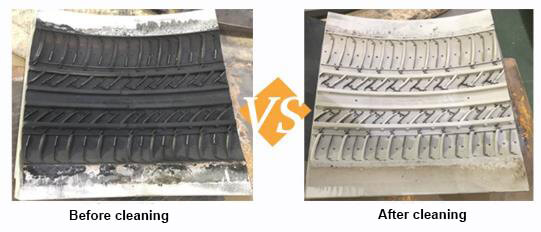
Effect of laser cleaning tire
Although the upfront cost of laser cleaning equipment is high, the benefits of reduced downtime, avoided mold damage, improved safety, and reduced raw material usage can quickly offset this investment.
According to a cleaning test conducted on a tire company’s production line, a set of large truck tire molds can be cleaned online using the laser cleaning equipment in just 2 hours.
Compared to traditional cleaning methods, the economic benefits of using laser cleaning are clear.
In the food industry, the anti-stick elastic film on molds needs to be regularly replaced to maintain hygiene. Laser cleaning, which does not require chemical agents, is also well suited for this application.

Mold cleaning effect
4.2. Cleaning of weapons and equipment:
Laser cleaning technology is widely utilized in the maintenance of weapons.
The laser cleaning system is an efficient and quick way of removing rust and contaminants, and it also allows for selective removal, resulting in an automated cleaning process.
Compared to chemical cleaning, laser cleaning not only provides a higher level of cleanliness, but also minimizes surface damage to the objects being cleaned.
Additionally, by adjusting different parameters, a dense oxide protective film or metal melting layer can be formed on metal surfaces, enhancing their strength and resistance to corrosion.
Finally, the waste generated by laser cleaning is environmentally friendly and the process can be performed remotely, reducing the risk of health hazards to operators.
4.3. Removal of old aircraft paint:
In Europe, laser cleaning systems have been widely used in the aviation industry for a long time.
Aircraft surfaces need to be repainted after a certain period, but before this can happen, the old paint must be completely removed.
Traditional mechanical paint removal methods can easily damage the metal surface of the aircraft and pose a threat to safe flight.
However, by utilizing multiple laser cleaning systems, the paint layer on the surface of an A320 Airbus can be completely removed within two days without causing any damage to the metal surface.
4.4. Cleaning of building exterior wall:
With the rapid growth of China’s economy, more and more skyscrapers are being built, and the challenge of cleaning their exterior walls is becoming increasingly prevalent. The Laserlaste laser cleaning system provides an effective solution for cleaning building exterior walls through optical fibers that are up to 70 meters in length.
This system can effectively clean all types of pollutants from various surfaces such as stone, metal, and glass, resulting in a cleaning efficiency that is several times higher than conventional cleaning methods.
It can also remove black spots and discoloration from various stone materials used in building exteriors.
Experiments using the laser cleaning system on buildings and stone tablets at the Songshan Shaolin Temple have shown that laser cleaning has a highly positive effect in protecting ancient buildings and restoring their appearance.
4.5. Cleaning in the electronic industry
The electronic industry utilizes laser technology for oxide removal. Precision decontamination is crucial in this industry, making laser oxide removal an ideal solution.
Before welding a circuit board, it is necessary to completely remove any oxides from the component pins to ensure optimal electrical contact. This process must not damage the pins.
Laser cleaning is able to meet these requirements and is highly efficient. In fact, a single pin only needs to be exposed to the laser once for effective decontamination.
4.6. Precision degreasing cleaning in precision machinery industry:
In the precision machinery industry, it is often necessary to remove esters and mineral oils used for lubrication and corrosion resistance from parts. This is typically done through chemical methods, but chemical cleaning often leaves residues.
Laser deesterification is an alternative that can completely remove esters and mineral oils without damaging the surface of the parts. This is achieved through the use of a shock wave.
The shock wave is formed by the explosive gasification of the thin oxide layer on the surface of the parts, leading to the removal of pollutants rather than through mechanical interaction.
This method of laser cleaning is widely used in the aerospace industry for thorough deesterification of mechanical parts.
It can also be applied in the machining of mechanical parts to remove oil esters.
4.7. Pipeline cleaning in the reactor of nuclear power plant:
The laser cleaning system is also utilized in the cleaning of pipes in nuclear power plant reactors.
By using optical fibers, a high-power laser beam is introduced into the reactor to directly remove radioactive dust, resulting in easy-to-clean materials. Additionally, remote operation ensures the safety of personnel.
In conclusion, laser cleaning plays a crucial role in many fields, including automobile manufacturing, semiconductor wafer cleaning, precision parts processing and manufacturing, military equipment cleaning, building exterior wall cleaning, cultural artifact protection, circuit board cleaning, precision parts processing and manufacturing, LCD cleaning, chewing gum residue removal, and many more.
Main cleaning methods
There are four main laser cleaning methods:
① The Laser Dry Cleaning Method, also known as Direct Radiation Decontamination by Pulsed Laser.
② The Laser + Liquid Film Method, which involves depositing a layer of liquid film on the substrate surface and then decontaminating it with laser radiation.
③ The Laser + Inert Gas Method, which involves blowing inert gas onto the substrate surface while the laser radiation is being applied. Once the dirt is stripped from the surface, it is immediately blown off by the gas to prevent re-pollution and oxidation.
④ After the dirt is loosened by the laser, it is cleaned using a non-corrosive chemical method. This method is only used for cleaning stone cultural relics.
The first three methods are the most commonly used, while the fourth method is only used in specific cases.
Laser cleaning technology has been applied to stone materials internationally for over ten years. In China, the application of laser cleaning technology to stone materials started later due to the high cost of laser equipment.
Despite the high cost, laser cleaning technology has many advantages over traditional cleaning methods and as technology continues to improve and equipment becomes more widely available, it is expected to play a significant role in the cleaning industry for stone materials.
